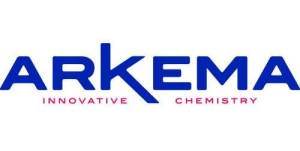We’ve got all the details of a new contest to share in today’s 3D Printing News Briefs, followed by business and some news about RAPID + TCT, which will be held next month in Detroit. Protolabs has launched a contest to help inventors turn their ideas into reality, while Arkema has increased its production capacity for photocure resins and SmarTech Analysis published a report on 3D printing footwear. R.D. Abbott and the Dow Chemical Company will be exhibiting together at RAPID, and SPEE3D will have something new to display at its booth that’s not been shown to the public before.
Protolabs Launches New Competition
 Digital manufacturer Protolabs, which uses 3D printing, injection molding, and CNC machining to manufacture custom prototypes and on-demand production parts, has just launched a new competition across Europe called the Cool Idea Award. Applicants will have the chance to turn their own cool ideas into reality if they win the contest, and the prize of up to £50,000 of prototyping and manufacturing services every year. The company originally thought up the scheme back in 2011, and has been successful in helping entrepreneurs, inventors, and small companies in the US launch new products, like the automated FarmBot precision farming system.
Digital manufacturer Protolabs, which uses 3D printing, injection molding, and CNC machining to manufacture custom prototypes and on-demand production parts, has just launched a new competition across Europe called the Cool Idea Award. Applicants will have the chance to turn their own cool ideas into reality if they win the contest, and the prize of up to £50,000 of prototyping and manufacturing services every year. The company originally thought up the scheme back in 2011, and has been successful in helping entrepreneurs, inventors, and small companies in the US launch new products, like the automated FarmBot precision farming system.
“Great product ideas emerge every day but far too many of these promising ideas end up being scrapped because product development resources are scarce. Our Cool Idea Award will help turn those inspiring concepts into real-life products,” Protolabs’ design expert Ray Faulkner said.
“The grants can be used to build prototypes or even an initial production run and offer a tremendous opportunity for engineers and inventors to shout to the industry about how great their idea is.
“The sort of thing we mean by a ‘cool idea’ is simply a product that would make life a little better, easier, safer, healthier, less frustrating or more fun – for individuals or communities.”
Application periods for the annual award are April 1 – May 31, July 1 – August 31, and October 1 – November 30.
Arkema Increases Production Capacity at Sartomer Plant
 Four years ago, Arkema announced that it would be increasing its focus on 3D printing materials research, and followed through with a major investment plan in its biosourced polyamide 11 chain. The chemical and advanced materials developer also said it would increase the production capacity of photocure resins at its Sartomer subsidiary in China by over 30%, and as of this month, Arkema has completed this promise. The new production line at the phtotocure advanced liquid resin production plant in Nansha was just inaugurated, and will produce UV, LED and EB liquid resins, as well as Sartomer’s N3xtDimension 3D printing resins. The investment in this new line will support Sartomer’s strategy to create breakthrough solutions for curing technologies, and will help meet Asia’s demand in the 3D printing, adhesives, electronics, and inkjet printing markets.
Four years ago, Arkema announced that it would be increasing its focus on 3D printing materials research, and followed through with a major investment plan in its biosourced polyamide 11 chain. The chemical and advanced materials developer also said it would increase the production capacity of photocure resins at its Sartomer subsidiary in China by over 30%, and as of this month, Arkema has completed this promise. The new production line at the phtotocure advanced liquid resin production plant in Nansha was just inaugurated, and will produce UV, LED and EB liquid resins, as well as Sartomer’s N3xtDimension 3D printing resins. The investment in this new line will support Sartomer’s strategy to create breakthrough solutions for curing technologies, and will help meet Asia’s demand in the 3D printing, adhesives, electronics, and inkjet printing markets.
Christophe André, Executive Vice President, Advanced Materials for Arkema, said, “This investment strengthens our commitment to providing the most advanced photocure resin solutions with innovative properties, as well as services, to our customers around the world and giving them a leading competitive edge in their respective markets. We thank our internal teams and our partners who helped us to start this new production line on schedule. We also thank our customers for their continuous trust and support over the years by using Sartomer’s products.”
SmarTech’s 3D Printed Footwear Report
By 2029, footwear additive manufacturing and 3D printed footwear is projected to generate over $6.5 billion a year in global revenues, according to a new report by SmarTech Analysis titled “Additive Manufacturing in the Footwear Industry.” Obviously, the footwear industry could majorly benefit from the inherent potential 3D printing has for product personalization and mass customization, and the report highlights some of the most relevant business opportunities in the future for companies already invested in 3D printing. Some of the main stakeholders and trends driving mass customization and footwear automation, as well as what’s limiting adoption of the technology, are analyzed in the report as well.
For instance, SmarTech wrote in the report that footwear 3D printing-related revenues represent about 0.3% of global footwear market revenues right now, with the number expected to grow to 1.5% by 2029. Final parts represent 34% of all revenues associated with 3D printed footwear parts, while 3D printed midsoles are expected to be the most significant revenue opportunity, growing at a 24% CAGR. The demand of 3D printing materials in the footwear industry is forecast to reach 3.7 thousand metric tonnes by 2029, with 50% of this coming from powders. Finally, along with housewares, footwear is expected to become the largest 3D printed consumer segment. To learn more, download the report.
R.D. Abbott Co-Exhibiting with Dow Chemical Company at RAPID + TCT
![]() At next month’s RAPID + TCT event in Detroit, elastomers supplier and materials science company R.D. Abbott Co., Inc. (RDAbbott) will be exhibiting alongside The Dow Chemical Company at booth #1673. Together at the event, which runs May 20-23, they will exhibit the L280 LAM 3D printer, developed in collaboration with Dow’s business unit Dow Performance Silicones and German RepRap GmbH.
At next month’s RAPID + TCT event in Detroit, elastomers supplier and materials science company R.D. Abbott Co., Inc. (RDAbbott) will be exhibiting alongside The Dow Chemical Company at booth #1673. Together at the event, which runs May 20-23, they will exhibit the L280 LAM 3D printer, developed in collaboration with Dow’s business unit Dow Performance Silicones and German RepRap GmbH.
This patent-pending, production-ready L280 prints successive layers of Dow’s SILASTIC 3D 3335 liquid silicone rubber (LSR), and then each layer is fully cross-linked through thermal curing. This material has dynamic and physical properties that match those of molded LSR, and when combined with the LAM platform, can make functional prototype parts for high-volume manufacturing. This LSR material opens up new potential possibilities in footwear and other soft but durable applications.
SPEE3D Exhibiting 3D Printed Rocket Nozzle at RAPID + TCT
 Also at next month’s RAPID + TCT, Australian 3D printing startup SPEE3D will be displaying its LightSPEE3D metal 3D printer, and running it continuously throughout the event at its booth #1941. It’s the first metal 3D printing system that uses supersonic 3D deposition (SP3D) technology to fabricate, at production speeds, manufacturing-grade parts. But, the LightSPEE3D 3D printer isn’t the only thing the company will be showing at RAPID.
Also at next month’s RAPID + TCT, Australian 3D printing startup SPEE3D will be displaying its LightSPEE3D metal 3D printer, and running it continuously throughout the event at its booth #1941. It’s the first metal 3D printing system that uses supersonic 3D deposition (SP3D) technology to fabricate, at production speeds, manufacturing-grade parts. But, the LightSPEE3D 3D printer isn’t the only thing the company will be showing at RAPID.
For the first time, SPEE3D will be displaying to the public a pure copper rocket nozzle, weighing in at 20 kg, that was manufactured on its large-scale WarpSPEE3D 3D printer, which can produce parts up to 1 x 0.7 m. The nozzle stands 265 mm high, and is an example of a major game-changer in the aerospace industry, as it means lead times could be reduced from six months to just under 8 hours.
Discuss these stories and other 3D printing topics at 3DPrintBoard.com or share your thoughts in the Facebook comments below.
Subscribe to Our Email Newsletter
Stay up-to-date on all the latest news from the 3D printing industry and receive information and offers from third party vendors.
You May Also Like
Precision at the Microscale: UK Researchers Advance Medical Devices with BMF’s 3D Printing Tech
University of Nottingham researchers are using Boston Micro Fabrication‘s (BMF) 3D printing technology to develop medical devices that improve compatibility with human tissue. Funded by a UK grant, this project...
3D Printing Webinar and Event Roundup: April 21, 2024
It’s another busy week of webinars and events, starting with Hannover Messe in Germany and continuing with Metalcasting Congress, Chinaplas, TechBlick’s Innovation Festival, and more. Stratasys continues its advanced training...
3D Printing Webinar and Event Roundup: March 17, 2024
It’s another busy week of webinars and events, including SALMED 2024 and AM Forum in Berlin. Stratasys continues its in-person training and is offering two webinars, ASTM is holding a...
3D Printed Micro Antenna is 15% Smaller and 6X Lighter
Horizon Microtechnologies has achieved success in creating a high-frequency D-Band horn antenna through micro 3D printing. However, this achievement did not rely solely on 3D printing; it involved a combination...






























